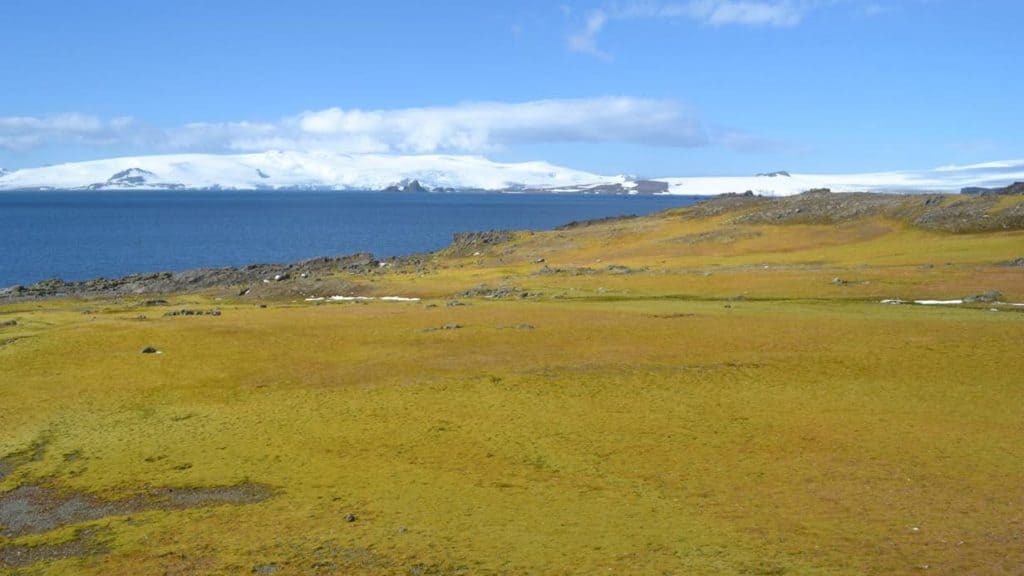
Over the last 50 years, Antarctica has been getting decidedly greener, and scientists are both excited and nervous about the huge change. Reliable meteorological records are only available starting in the mid-twentieth century, so it’s difficult for researchers to point to weather changes as an exact cause, but studies of other elements on the continent have indicated that a general warming of climate is responsible.
Those studying these increasingly green parts of the land have said that the effects are parallel to those seen in parts of the Arctic, which have been studied extensively and deemed to be a result of a warming climate.
“Temperature increases over roughly the past half century on the Antarctic Peninsula have had a dramatic effect on moss banks growing in the region,” Matthew Amesbury, a paleoclimate researcher at the University of Exeter in the U.K., said in a statement. “If this continues, and with increasing amounts of ice-free land from continued glacier retreat, the Antarctic Peninsula will be a much greener place in the future.”
The two species of moss that have been rapidly growing these past few decades were used as the main point of reference in the increase of growth and studied by drilling down into the layers of the moss. According to the studies, which allowed scientists to look at growth patterns as far back as 150 years ago, up until 50 years ago the dominating moss species grew at a rate of one millimeter or less per year. However, about 50 years ago the rate of growth more than doubled, and now the moss grows at a rate of three or more millimeters per year.

Scientists took samples at three sites across a 400-mile span of the Antarctic Peninsula and found consistent results at all three sites, meaning that the cause of the increased growth is widespread and not exclusive to one area’s changing landscape. When temperatures rise, the environment for plant growth becomes even more optimal and, as Antarctica’s ice melts, more meltwater becomes available to nourish the plants. As researchers point out, however, this isn’t the first time that Antarctica has experienced greening.
“Change is the pulse of our planet,” Robin Bell, a geophysical researcher with Columbia University’s Lamont-Doherty Earth Observatory, told the National Geographic. “So change is not a surprise. But the change caused by humans and the rate of change are both new.”
Although Antarctica has been the site of a rapidly different environment than the one we know today, this was the result of a high level of greenhouse gases during the Eocene epoch, which affected the continent for about 7 million years. That’s a huge difference from the intense damage that humans have inflicted on the planet since the industrial revolution in the late 17oos to the mid 1800s.
Despite the alarming rate at which Antarctica and other regions, like the Arctic, are greening, scientists are also intrigued at this opportunity to study something that hasn’t happened in millions of years. Independent of the consequences this greening will have for the entire planet, this is literally unchartered territory that researchers plan to take advantage of.
“With less ice, more of the continent’s rock will be uncovered, and there will be so many new things to learn,” said Bell. “It’s so important to leverage all the observations of this remote place we can get our hands on.”


